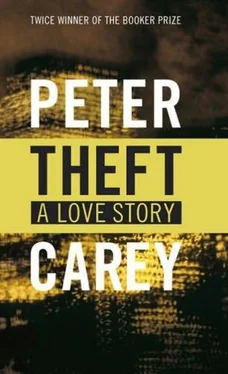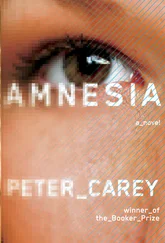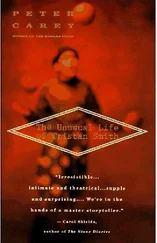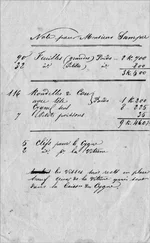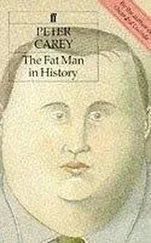Well fuck you, Vasari. That was the level of my response. I thought, You went to the finest schools all right but you are nothing more than a gossip and a suck-up to Cosimo de Medici.
I was a butcher and I came in through the bathroom window and how could I do anything but hold Marlene? I had never been so close to another human being, not even, forgive me, my darling son. And I kissed my thief at ten o'clock at night, on Greenwich, between Duane and Reade, not because I was blind, or because I was a fool, but because I knew her. I was on her side, not Christie's, not Sotheby's, not the dead-eyed pricks from 57th Street who presumed to judge my paintings and then went out to bid up Wesselmann or some piece-of-crap de Chirico. I kissed her wet smudgy lids and then, in the blue light, with the wind lifting her straw-coloured hair straight up into the air, she smiled.
"Do you want to know why the Leibovitz is a different size to Boylan's?"
I waited.
"Dominique," she said.
"The catalogue raisonne!"
"Dominique was a drunk," she said. "The catalogue raisonne says thirty by twenty-and-a-half inches. It's wrong. I must be the first one to ever measure it." She kissed me on the nose. "And I know your secret too."
"No you don't."
"You're painting a new Leibovitz.". "Maybe."
"You're a very naughty boy, but did you consider, for a moment, how a new Leibovitz might possibly acquire a provenance?"
"You'll find a way," I said, and I meant it, for I had thought of this so many times before.
"I will," she said and then we kissed, winding, pressing, pushing, swallowing, wet clay, one entity, one history, one understanding, no air left between us. You want to know what love is?
Not what you think my darling young one.
I've been back since, to that corner where we each formally declared our wholehearted criminal intent. There should be a blue plaque there, but there's only a Korean nail salon, a pet shop, the sort of wine store that sells Bordeaux futures. The streets are filled with thousand-dollar strollers, wheels as big as SUW, every third one carrying twins. IVF. Sci-fi. Doesn't matter.
I don't mind. Here I became a counterfeiter, how fucking shameful. Please let me publicly apologise for my fall from grace. Of course Leibovitz himself, as everybody knows, had been part of what they used to call a "Rembrandt factory". That was in Munich, in his early teens. He was the pencil man in the employ of a kind of German Fagan, that is, he was the one who went to the ghetto to draw "characters". These were then handed to a Swiss who would take them to the Pinakothek and there carefully daub them a la Rembrandt. Leibovitz, having walked through ankle-deep mud all the way from Estonia, was just trying to stay alive and his forgeries cannot be compared— morally, artistically, good grief—with what I was making in that cold liquid-blue room above Mercer Street. Here, with the door locked and bolted, I began to prepare that famous lost Leibovitz which had been continually admired by Picasso and described by Leo Stein in his journal. The original hung for a while in the dining room at 157 rue de Rennes, but it is not to be seen in any of Dominique's boring dinner-party photographs. Forty-eight of these survive, each one the same—that is the guests have been required to turn and face the hostess, each one to raise a glass.
The painting, I guess, was behind her back, hidden from her subjects and from history.
It's a fair guess that the painting was spirited away on that snowy night in January 1954, and that it went into the garage by the Canal Saint-Martin, but after that, who knows? Everything about it was thought to be remarkable, not least—Stein mentions this—that it was painted on canvas at a time when canvas was impossible to obtain.
So when you read the signature and date—Dominique Broussard, 1944—what does it tell you about Dominique, that she dared to use a square inch of precious canvas for herself?
It is also important to remember that the artist was a Jew in Vichy France and by his very refusal to leave Paris had placed himself in mortal danger. The complete and utter seriousness of his situation coincides with his decision to abandon the popular sentimental Shtetl Moderne style he had drifted into since the heights of 1913.
Leo Stein describes a cubist work, made in the characteristic Leibovitz cones and cylinders, which suggests to a reader, sight unseen, his younger oeuvre. Stein however is at pains to make it clear that this was "an unexpected leap". The thing that tickled him the most was a raging golem, "like a circus beast", a bright yellow robot with wires and a generator and five frightened villagers turning the generator like a windlass. Anyone who has seen Chaplin mecanique (1946) will recognise the style here being described, one that owes more to Leger than to Braque while being undeniably a Leibovitz. Writing at a time when Chaplin mecanique did not yet exist, Stein beautifully evokes the severe mechanical planes, steely grey, smoke grey, and the armoured victims of the Golem's wrath, "springs like men, lethal centipedes in terror", tumbling towards the bottom left, nails, screws, washers, all in the most "elegant geometric chaos of defeat".
If the buzzer sounded, forget it. Hugh? Come back later.
Marlene? She had a key but even she was denied any sight of the work-in-progress, a great deal of which in any case— took place solely in my head. That is, I sketched and read, filling my Gentile imagination with I. B. Singer's imps and golems, Marsden Hartley, Gertrude Stein. This was not Leibovitz. I didn't say it was.
I sought out the prewar loonies, the futurists, the vorticists of whom it can at least be said that they were kind enough to write more than they painted. Not that Leibovitz the Jew would ever have placed himself amongst their number, but because he had always shown a great communist hope for the technological future. I found a ridiculous bookstore upstairs on Wooster Street where, amongst a lot of creepy comics and works by Aleister Crowley, there was Gaudier-Brzeska: HUMAN MASSES teem and move, are destroyed and crop up again.
HORSES are worn out in three weeks, die by the roadside.
DOGS wander, are destroyed, and others come along.
I had to somehow feel the past as if it would not arrive until tomorrow, feel it in my gut as it was born, the collision of violent vectors, contradictions driven by Cossacks, Isaac Newton, Braque, Picasso, fear and hope, the dreadful Bosch.
I SHALL DERIVE MY EMOTIONS SOLELY FROM THE ARRANGEMENT OF THE SURFACES, I shall present my emotions by the ARRANGEMENT OF MY SURFACES, THE PLANES AND LINES BY WHICH THEY ARE DEFINED.
You can class all the above as getting in the mood. It was not the subject which was... paint. If I was to outwit my opponents at Sotheby's I could not be complacent. I prepared the ground with a white lead paint, and on top of this I made a charcoal sketch, the broad cartoon form of the work which would show against the lead with X-ray when they called their buddies at the Met. The work then had to be "about"—not the Golem—but lines and planes, space fractured and reconfigured by an angel of the future toiling along the road from Mont Sainte-Victoire to Avignon.
Then there was the handwriting, the little stabby brushstrokes which the old goat massed in those groups of parallel hatches.
This sounds so bloody easy, I am sure, but it involves more than a wrist and a red-sable brush. It is how you stand, how you breathe, whether you paint flat or on an easel. And there was the very particular modelling of the cylinders and cubes which I aimed to make a fraction—just a fucking smidgen—less confident than the Chaplin.
As I worked on my sketches I discovered and then adopted the mad joy in the Golem. He had an electric-light globe burning on his shoulder and blazing blue eyes, spheres of cobalt blue. So although wreaking vengeance, he was—like Stein had said—"a circus animal". I did not even plan this. It happened, partly a function of the palette, but only partly. Le Golem electrique, 1944, as I was later free to write upon its reverse side, was like a raging vengeful funfair ride.
Читать дальше
